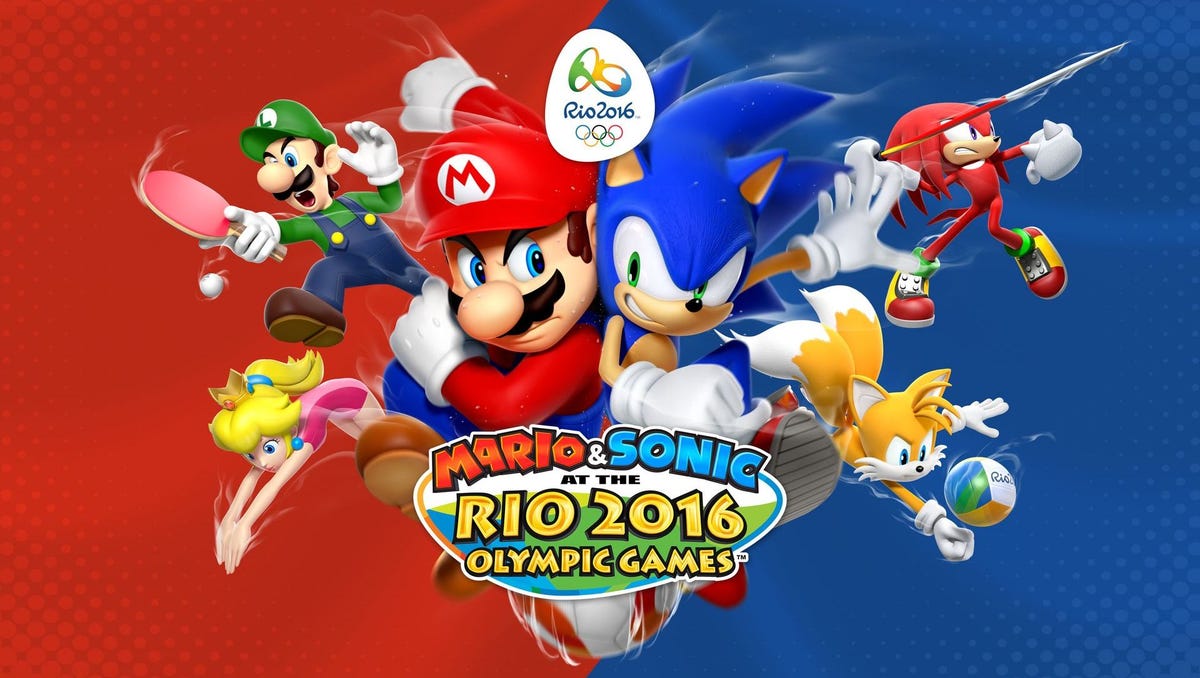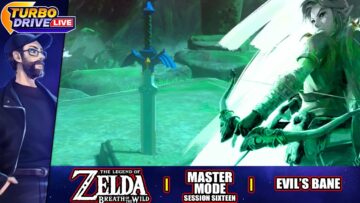
Review: Mario & Sonic at the Rio 2016 Olympic Games (Wii U)
Shocking revelation: I think I like Mario & Sonic at the Rio 2016 Olympic Games for the Nintendo Wii U.
This is the fourth Mario & Sonic Olympics game I’ve reviewed, and generally speaking, while I’ve never exactly hated one, I think it should be pretty clear from my review text that in the past I’ve always been a little lukewarm on this franchise. I can see the appeal, and even have fleeting moments of fun with the games, but they are quickly forgotten until the next one rolls around two years later, in which the whole song and dance begins all over again.

Rio 2016 for the Wii U isn’t like those games, and the number one reason for this is motion controls. Specifically, the complete and total lack thereof. Party games featuring motion controls are a dime a dozen on Nintendo’s platforms, and really, Mario & Sonic Olympics were just another drop in that bucket. The reasons why motion controls and party games go together so easily is obvious: motion control typically adds a slightly chaotic element to controlling a game, where finesse butts heads with fidelity. But taken out of that context, of shouting over your friends, it can feel a little hollow. Failing an event because the controls don’t work quite right becomes frustrating. Like a gimmick.
That makes Rio 2016 for Wii U a gimmick-free experience, I suppose. There’s no shaking, no tilting, or touch screen rubbing, and if you remember Sochi 2014‘s bizarre controller-swapping gameplay modes that had you constantly picking up or putting down different controller types, that’s gone too. Everything in this game is controlled with regular buttons and analog sticks, and it makes a world of difference.
I’m willing to admit that maybe I am bias against motion controls, but everything feels so much closer to expected standards now. If you’re on a bike, you steer with the left stick. Tricks are executed with the B button, and they charge up a boost meter that’s mapped to the A button. The tangibility you get with motion controls is traded for familiarity shared with industry control standards. The same goes for rugby, boxing, volleyball, and everything else in the game. It all controls the way you’d expect it to control. It’s almost like coming home again, in a sense, where you can just pick up and play a game without having to wrap your head around flicking or swinging or whatever other fiddly motion control stuff they’d have you do.
Even though Rio 2016 for the 3DS claimed to represent 14 Olympic events, that ended up being something of a misnomer. Rio 2016 for the Wii U ends up surpassing that number with the final total landing at 17 Olympic events, and most of the events from the 3DS version transfer over to the Wii U. Some mainstay events, like Golf, have been replaced with a number of new “Duel” events, which add power-ups and other systems typically reserved for what the other games used to call “Dream Events.”
Dream Events were always my favorite part of a Mario & Sonic Olympics game. They would would take a boring, clinical event like Archery and add over-the-top elements borrowed from the respective universes of Mario or Sonic. Often times it was nothing more than a simple power-up system, but occasionally you’d hit on a legitimately brilliant idea, like the “Curling Golf” mode from Mario & Sonic Sochi 2014. By scaling down the number of Dream Events to three “Duel” events, it’s clear more resources were spent beefing up the playability in other areas of the game, but I still miss the wackier takes on Olympic events.
The online multiplayer that Sochi 2014 hung its hat on is also missing in action this time around. In its place is a more generalized usage of internet connectivity: much like Splatoon, the game drops you into a lobby area, populated by other players who have been ranked on the game’s online leaderboards. As your Mii, you can walk around and talk to these players, learning special factoids about the various countries competing in the Olympics. It’s cute, but ultimately feels a bit flat, especially compared to the story mode available in the 3DS version. Stranger is that you are locked into whatever Mii is registered with your active Nintendo Network account, and even if you have other Miis present on your system, there is no way to bring them into the game in any capacity whatsoever. If you’re ever asked to use more than one Mii for an event, you have to use one of the generic defaults the game provides, with all of the other Mii slots remaining empty. I feel like I have to be missing something, but I’ve dug through every option in this game top to bottom and come up empty. It just doesn’t make sense.
The Mii customization from the 3DS version also carries over to the Wii U, but it’s perhaps more baffling than ever. The weird level restrictions on costume parts seem to be gone (as is the leveling system itself), but to supplant that, costume parts are now awarded totally at random. Over the course of playing the game, you’ll earn both rings and coins for wins. The only place to spend these is at the capsule machine, but it only accepts one type of currency at a time. So it could be that you roll up to the capsule machine with 25 rings and 3 coins, and the machine only accepts coins that day. Even if you do plonk down the cash to use the capsule machine, you’re far more likely to get Miiverse stamps than any stat-enhancing costume parts, making the whole thing feel like kind of a waste of time.
By far, the weirdest and most nonsensical issue I had with the game is with its main mode — The “Rio 2016 Tournament.” This is presumably where the game’s real meat is, and it’s where you earn the coveted Olympic gold medals for your Mii. Every event has three rounds, and each round thins out your number of opponents as you move towards the finals. Repetition aside, registering for a tournament event will lock you out of every single other mode in the game until you either forfeit that tournament or complete the finals. I’m not really sure why the game does this. Multiple times I’d boot Rio 2016 back up to find I’d quit in the middle of a tournament, and have to forcibly finish whatever I’d started before I could do anything else.
The good news is this is all mostly just window dressing. One of the very first things Rio 2016 for Wii U has you do is just play the “Single Match” mode, where you choose from the full roster of Mario and Sonic characters to compete freely in any event in the game. Play enough of the game and eventually the “Heroes Showdown” mode will become unlocked, and if you ask me, this is where the real fun is. You begin by being asked to pick Team Sonic or Mario, and for every event you win, you slowly eliminate all of the opposing team’s players until you defeat the team captain. Given what a letdown all of the Mii content in this game can be, having a deeper mode centered around letting the actual Mario and Sonic characters compete in a playlist of events is exactly what I was looking for. I just wish it was unlocked from the start.
I had considerably more fun with Mario & Sonic at the Rio 2016 Olympic Games for Wii U than I was honestly expecting. It may not have all of the features you want, or even necessarily all of the features you expect, but it pulls through where it counts. It may completely abandon the unique hardware functionality Nintendo’s been known for these last ten years, but I really do think it makes for a better, more playable and ultimately more enjoyable game. In terms of raw gameplay, the events in Rio 2016 are more fleshed out than they ever have been, and with proper controls, they all feel awesome to play. Events like Rugby and Football are almost robust enough to be sold as standalone games in their own right. If you have enjoyed any of the Mario & Sonic Olympics games in the past, this is one entry you don’t want to miss.



![[ID: xDjudJeLsaY] Youtube Automatic](https://lastminutecontinue.com/wp-content/uploads/id-xdjudjelsay-youtube-automatic-360x203.jpg)
![[ID: NAjzNfeZWnE] Youtube Automatic](https://lastminutecontinue.com/wp-content/uploads/2024/02/id-najznfezwne-youtube-automatic-360x203.jpg)

